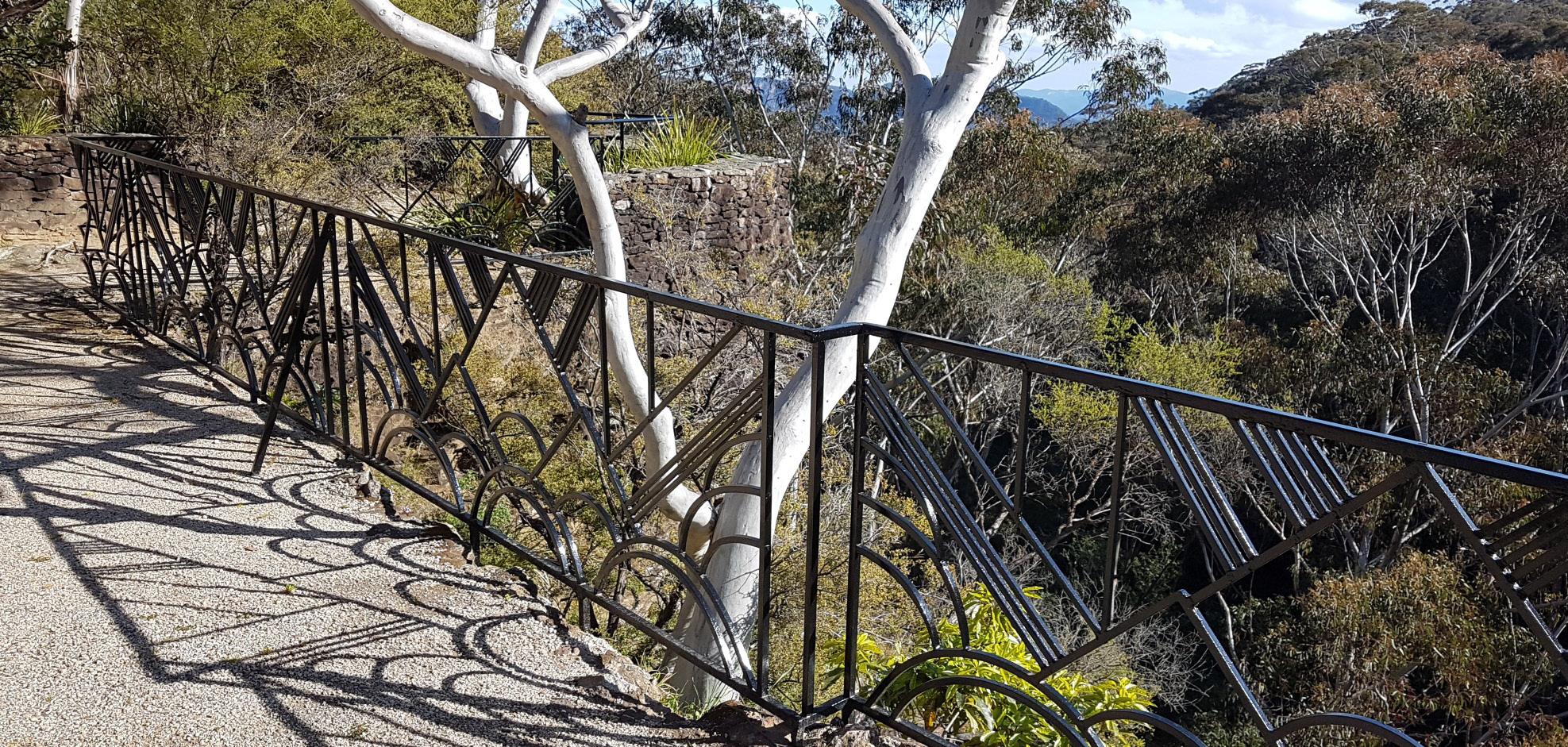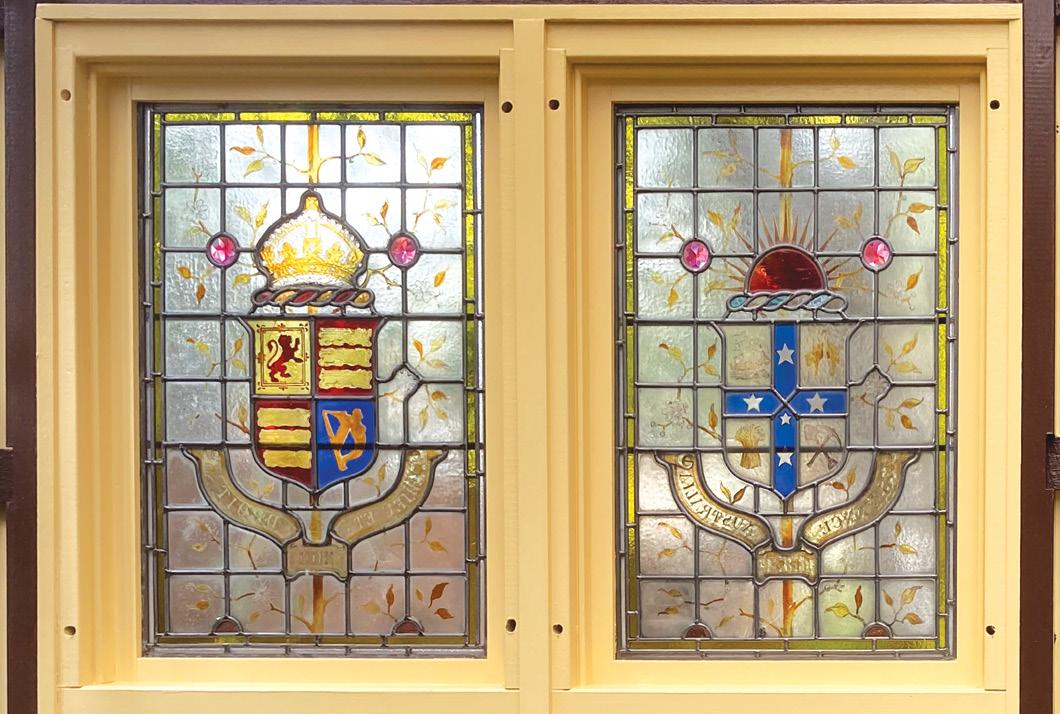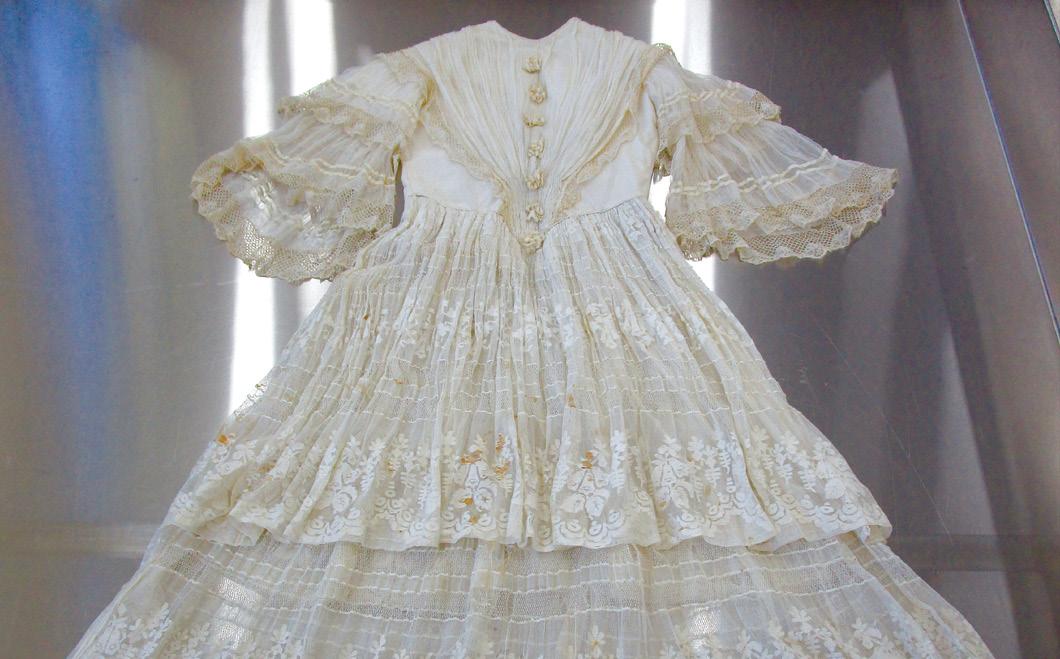
4 minute read
Reflect
Your Trust in Action
BY JESSIE BODOR, PHILANTHROPY MANAGER
The philanthropic spirit of our supporters helps the National Trust create real change. Three special projects have been completed recently across New South Wales, made possible by the generous support of foundations, donors and gifts in wills.
Wrought elegance restored Sometimes a ‘hidden’ treasure is hiding in plain sight, such as the art deco wrought ironwork staircase, gates and handrails at Everglades House & Gardens in Leura. Completed in 1936, this distinctive feature beautifully connects house, garden and bushland, forming a stylish and seamless transition from building to nature. Elegant curls ascend the house’s central staircase while the balustrades at the lookout over Gordon Falls create a border for the area with a pattern of a mountain landscape, billowing clouds and rays of sunlight. A local blacksmith is believed to have crafted this work to the design of Paul Sorensen.
But the balustrades needed attention to restore them to their former beauty. Old paint and rust were carefully removed across the intricate ironwork, which was treated with a protective coating and repainted in black, its original colour. Now, they are once again a striking feature of the lookout and continue to delight visitors as they wander through these spectacular gardens. This kind of conservation work is critical to ensure that Everglades remains faithful to the vision of both Paul Sorensen and Henry van de Velde.


This work was made possible by a sizeable bequest, which also paid for carpentry repairs and window frame painting of Everglades House. Bequests held in the National Trust Heritage Foundation provide ongoing revenue. A gift managed this way creates a long-term legacy, allowing the National Trust to continue its essential work.
Through a glass brightly When the dedicated group of volunteers caring for Miss Porter’s House found two stained glass leadlight windows wrapped in newspaper from 1978, they knew they had uncovered something special. Crafted in the nineteenth century and thought to be repurposed from a civic building, each window displays a coat of arms surrounded by delicately painted leaves and flowers. One panel shows the royal arms of the United Kingdom, and the other is the pre-Federation arms of Australia and motto, Advance Australia. The arms depict the Southern Cross dividing the four industrial backbones of the nation’s early economic growth – wool, shipping, mining and farming.
Although the Porters were fastidious record keepers, there is no record of the stunning windows. A family portrait photo from circa 1912 is the only reference to the windows in their original location in a wall of the fernery, that we have. When the windows were rediscovered, reinstalling them was the best way to restore the house’s integrity as planned by its original owners.
Miss Porter’s House volunteers held dinners and talks to raise funds to have the windows cleaned, repaired, conserved and reinstalled by specialists. In combination with a gift in a will,
Opposite Railings at Everglades Lookout (photo by Guy McIrath).
Left from top Miss Porter's House Windows (photo by Jean Bridges); The front of white dress before treatment (photo by International Conservation Services).
their fundraising helped bring an important part of bringing the Edwardian house's story back to life. The funding also provided for protective window covers for when the building is not open. The windows are now a permanent and fascinating feature of the fernery, reflecting not only sunlight but the desire of a working Newcastle family to decorate their home.
An exquisite and delicate delight Two sisters with a passion for textiles recently transformed a nineteenth-century lady’s dress through a donation from The J Permsew Foundation, a vehicle they established for their philanthropy.
The dress is typical of the period between 1845 and 1855 and represents a fascinating turning point in the history of fashion when Queen Victoria wore a white dress to her marriage to Prince Albert in 1840. Up to this point, brides typically wore their ‘best dress’, often a practical garment of robust fabrics in colours that concealed marks and stains. But after the royal wedding, white became the norm as women aspired to look like the young Queen.
Given the date of this piece, it is very likely that it was a wedding dress, though its wearer’s identity remains unknown. It is made of fine white gauze (an ultra-lightweight sheer form of cotton muslin), lace and ribbons. Floral patterns of bluebells and other flowers decorate the skirt. Conservation experts took great care when restoring the delicate garment, first giving it a gentle, thorough rinse and wash to remove stains and yellowing, then carefully repairing by hand damaged sections of lace, ribbon and rosettes on the bodice. The bright, intact and crease-free dress is now on display at Riversdale in Goulburn, where it not only delights visitors, but also enhances their understanding of life at the property almost two centuries ago.
Helen Brown, one of the sisters funding the treatment, believes that early European textiles like this dress are important pieces of Australia’s social history and should be conserved: “A good deal of attention is paid to physical structures, but it seems little funding is available to conserve some of the more ephemeral objects.”
MAKE YOUR MARK
Join our giving community and donate online today at nationaltrust.org.au/donate-nsw. If you want to be involved in upcoming projects contact Jessie Bodor, Philanthropy Manager on (02) 9258 0131 or jbodor@nationaltrust.com.au





